My Garden Gives Me 5 Kilos of Organic Veggies & Cool Air Every Day. Here’s How
What started with just 4-5 plants, has now bloomed into a garden with hundreds of plants that provides the family with organic food, pure air and a cool temperature even in the rising heat of Delhi.
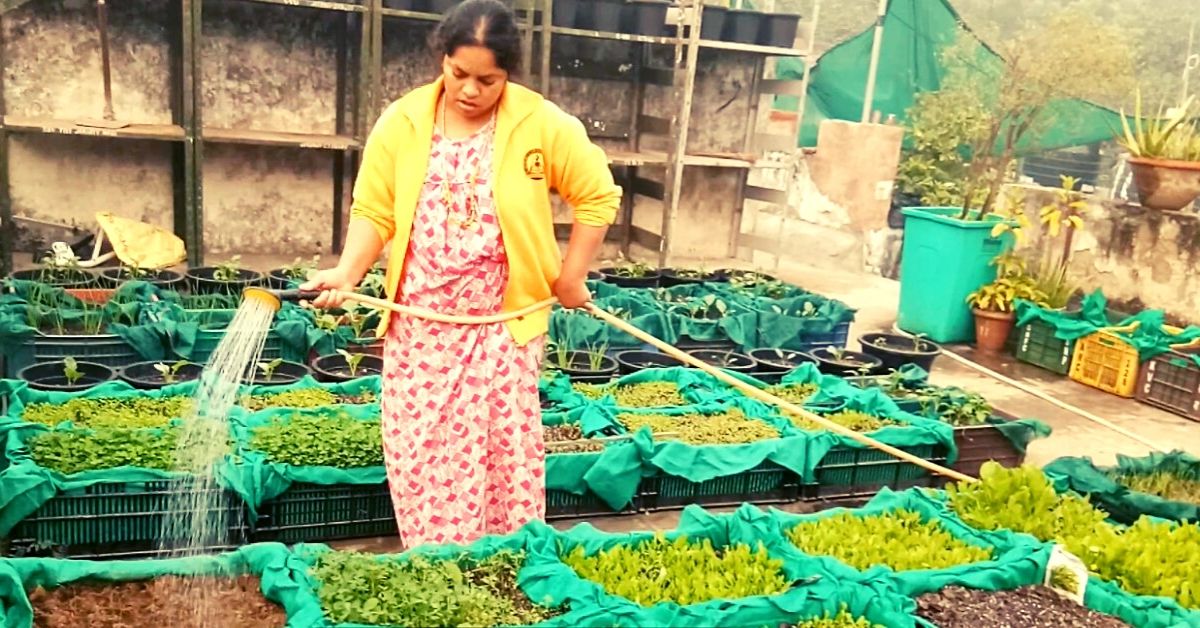
Green, blissful and uplifting are the words that come to my mind when I hear about a terrace garden in Delhi’s Moti Bagh area. It was created by homemaker Sumathi Chelliah in 2014 to improve the health of her family.
The 3,000-sq ft luscious garden thrives with 100 varieties of organic fruits, medicinal plants, flowers, and vegetables. Apart from a visual treat, this beautiful garden has created its biodiversity in a city that is otherwise infamous for its air pollution.
Hailing from Tamil Nadu, Sumathi moved to Delhi in 2004 along with her husband, Chellaiah Sellamuthu. Chellaiah is the Assistant Director of New Delhi Municipal Corporation’s Horticulture department.
The spiking air pollution, especially during winters, did not suit Sumathi, and soon, she developed breathing problems and dust allergy.
“The doctors recommended that I stay indoors or live in a place that has fresh air and greenery. They also told me to consume organic vegetables. While I continued with the medication and a healthier lifestyle, my triggering point came in 2014 on a trip to Chennai,” Sumathi tells The Better India.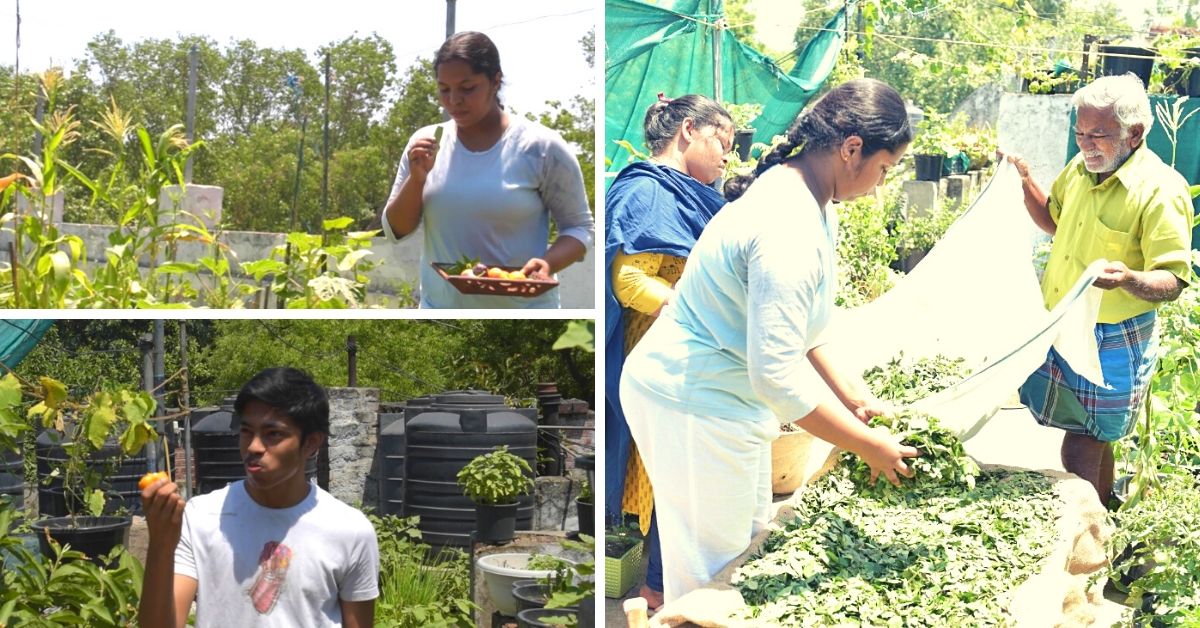
In Chennai, Sumathi met a couple of horticulture experts through her husband who suggested that she try her hand at rooftop farming. Intrigued, she visited experts at their terrace gardens to learn more.
They gave her organic seeds of easy-growing vegetables like tomatoes, brinjals and spinach, which she began to grow on her terrace.
She found success in the very first harvest and realised that one does not need any degree, course or workshop to grow their own food. “All you need is the willingness and the inspiration to go the extra mile,” she adds.
Chelliah agrees with his wife, “It is Sumathi’s devotion and determination that our harvest cycle gives us at least five kilos of fresh vegetables daily. Our market purchase has reduced significantly, and of course, health also has improved. Though I have studied horticulture, there are days when I am stunned to see my wife’s expertise in gardening.”
What Makes This Terrace Garden Stand Out
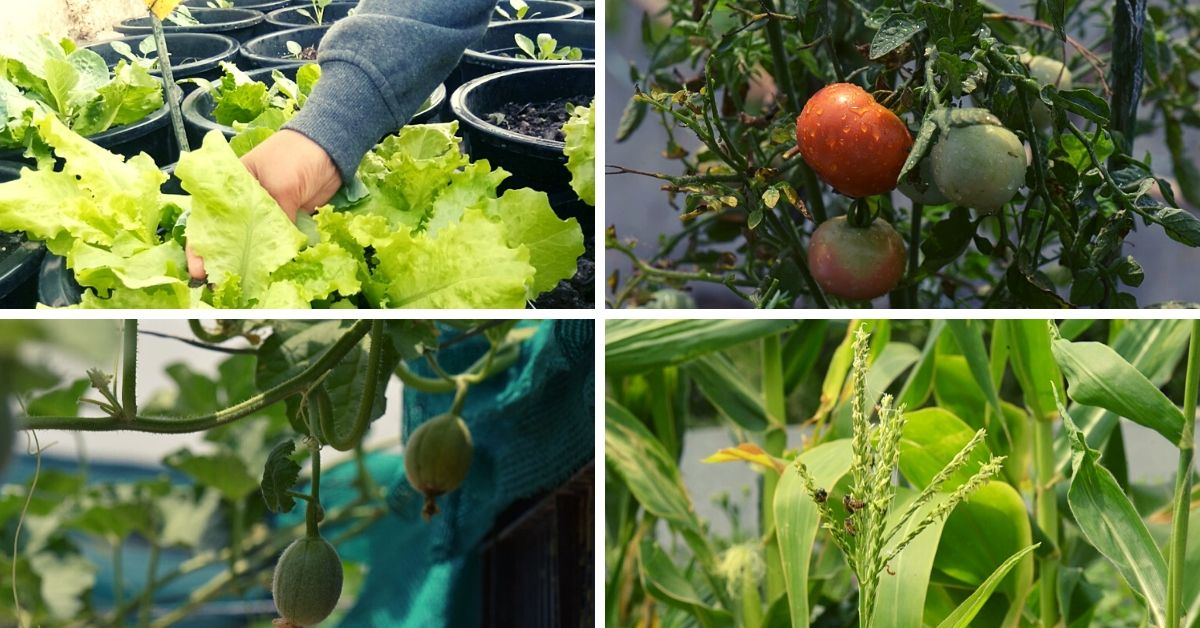
If you are a resident of Delhi, you probably know that growing even basic vegetables like tomatoes is an arduous task due to the extreme heat.
Meanwhile, most gardeners prefer growing vegetables, fruits, herbs or flowers. In some cases, gardeners adhere to one set of vegetables due to space and time crunch.
But not this Moti Bagh garden.
Sumathi went all out by growing all kinds of plants and varieties including insulin plant, kala basa, lemongrass, mint, banana, orange, guava, snake gourd, lettuce green, spinach, mustard, carrot, beetroot, celery, broccoli, red cabbage, zucchini, pumpkin, maize, muskmelon, watermelon, strawberry, ajwain, moringa and jasmine.
Rare and indigenous varieties like rhubarb, rosemary, Chinese cabbage, lettuce lollo rossa, gongura (hibiscus) and rosemary also flourish in her garden.
So, how does Sumathi increase the survival rate of her plants?
“Seed selection is very crucial, and thankfully I have an in-house horticulture expert that makes the task easy. Meanwhile, I learnt other hacks from my mistakes in the last couple of years. Having seen the results, I strictly abide by them,” she mentions.

Sumathi’s Gardening Rules:
1. Multi-Layer Farming
As pointed out earlier, heat is a significant problem in Delhi. So this homemaker has turned towards the multi-layer farming method in which two or more plants are grown in a single pot or very close proximity.
“The catch here is to provide shade to smaller plants by growing tall ones next to them. Or growing plants with big leaves. This has increased the survival rate of my plants for sure. Plus, this method is beneficial for those who have less space,” says Sumathi.
Backing the multilayer method in which plants support each other, Indra Singh, Writer and Director of Policy and Outreach, National Seed Association of India, tells TBI, “In soaring Delhi temperatures, the best way to protect your plants is to replicate the ecological system of forest where the underground crops and tall plants support each other. They not only provide shade but also nutrition to each other. Chilli and corn or beans and corn make for good examples.”
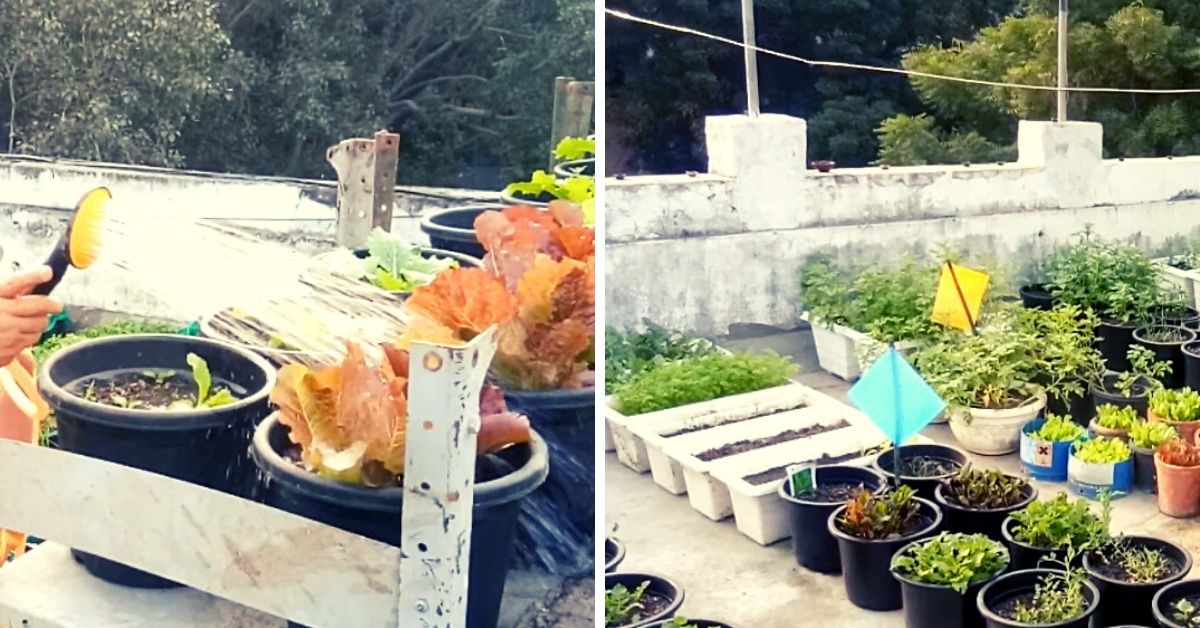
Giving an example from her garden, Sumathi says, “I grow corn and leafy vegetables in one pot. The height of corn provides ample shade to the greens. Meanwhile, I have sowed brinjal and coriander together.”
She has strategically placed medicinal plants and climbers like beans, cucumber, sweet pea and gourds next to pots with short-heighted plants.
2. Waste Management
Sumathi, who comes from an agrarian family, has always been conscious of her lifestyle. Like every homemaker, she believes in reusing household items before discarding them.
This principle is reflected in her gardening habits, as she has reused waste containers like vegetable crates, thermocol planters, plastic takeaway containers and so on to grow plants.
In the same vein, kitchen waste is converted to organic compost.
“It has been close to six years that we have been treating kitchen waste at source. I deposit all the wet waste into a container every day and add soil in between. After two months, the waste decomposes and gives us nutrient-rich compost,” she adds.
3. Natural Pest Repellent
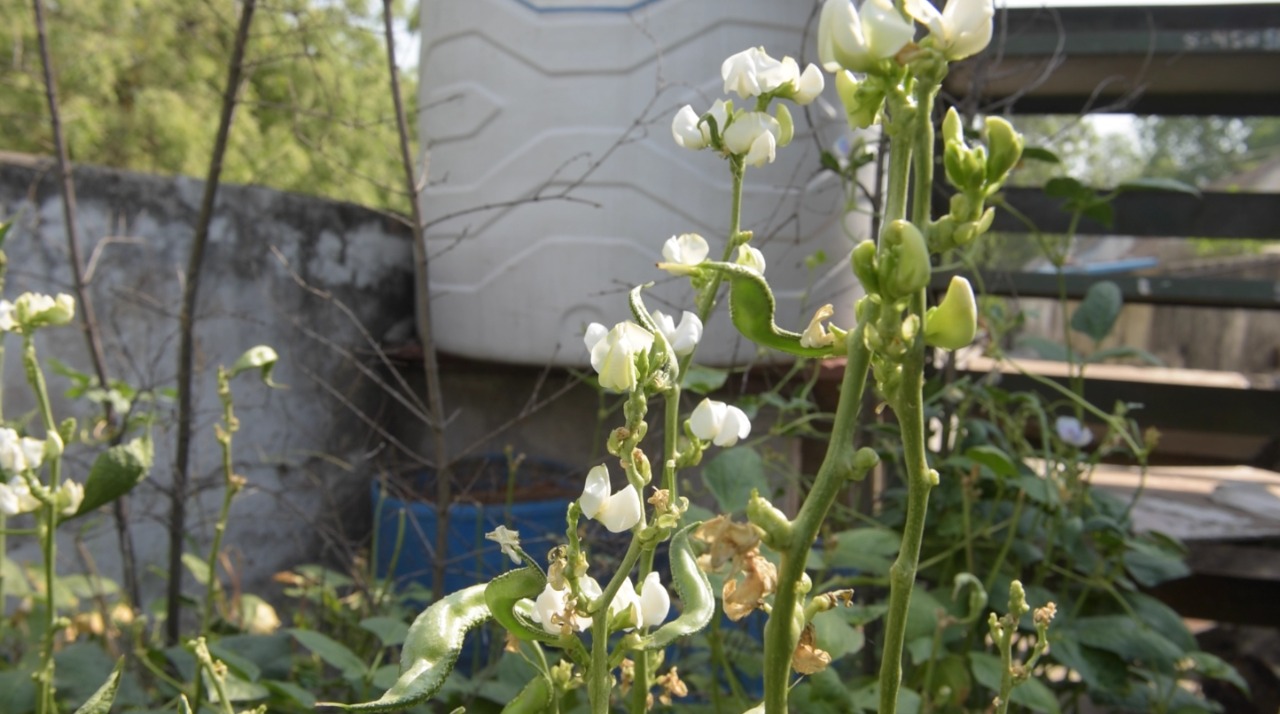
Using chemical-based harmful fertilisers and pesticides to control or eliminate pests that are dangerous to plants is an issue often raised by agriculture experts.
When Sumathi was faced with a similar dilemma, she refused to give in and found natural pest repellents.
“I use buttermilk, fermented curd, neem oil, fish bones and cow dung to keep insects at bay and increase soil fertility. Sticky cards (glue-based traps) are also an alternative.”
She also planted jasmine and marigold that attract honeybees, which are excellent pest repellers.
What started with just 4-5 plants, has now bloomed into a garden with hundreds of plants that provide the family with organic food, pure air and a pleasant temperature even in the rising heat of Delhi.
The best part?
Sumathi no longer has breathing problems or allergies!
(Edited by Shruti Singhal)
Like this story? Or have something to share?
Write to us: [email protected]
Connect with us on Facebook and Twitter.
This story made me
- 97
- 121
- 89
- 167
Tell Us More
We bring stories straight from the heart of India, to inspire millions and create a wave of impact. Our positive movement is growing bigger everyday, and we would love for you to join it.
Please contribute whatever you can, every little penny helps our team in bringing you more stories that support dreams and spread hope.



















